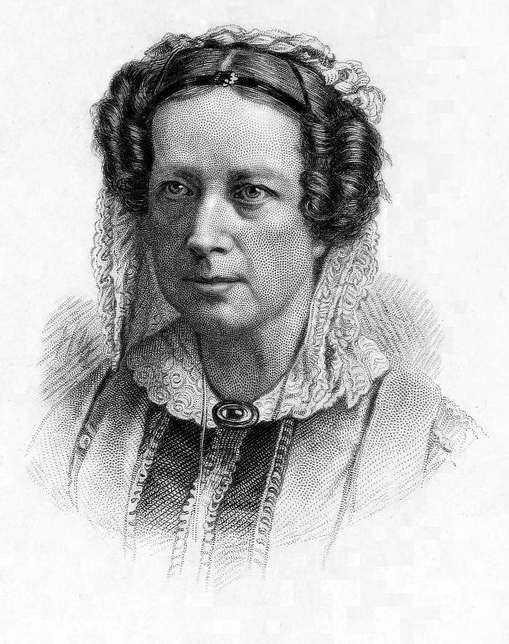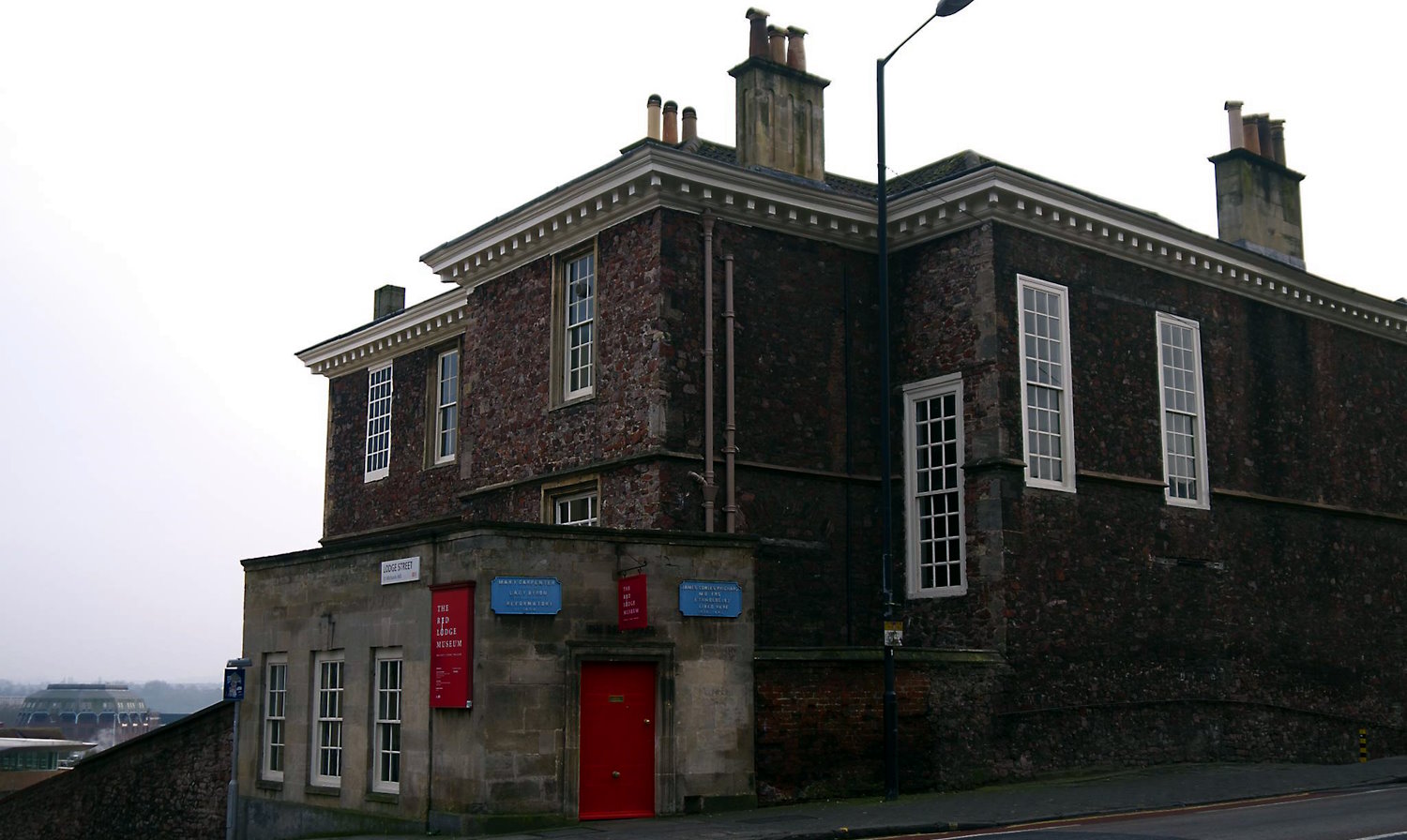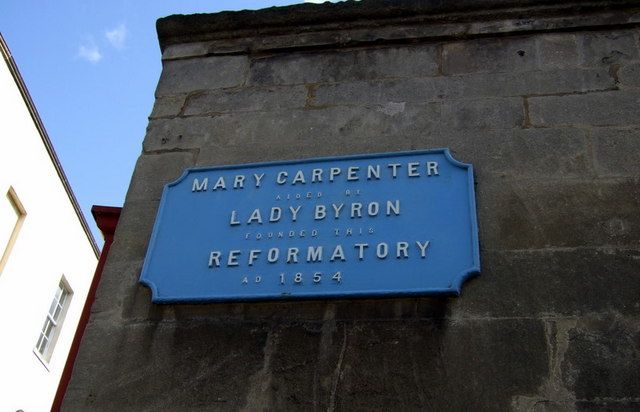Mary Carpenter, reformatory schools and education. Mary Carpenter’s path-breaking work on the experiences of children in trouble – and the education that should be offered them was a landmark in nineteenth-century educational and social analysis. Her realism, tolerance, and good humour struck a particularly liberal note. We explore the main principles and methods of her educational approach.
contents: introduction · educational principles and methods · conclusion · further reading and references · how to cite this article
Photograph: Red Lodge, Bristol by Sam Saunders [flickr | ccbysa2]. From 1854, the Lodge housed a reformatory established by Mary Carpenter.
_______
Mary Carpenter (1807-77) was born in Exeter, the daughter of a Unitarian minister (her father was Minister of a Chapel in Lewins Mead, Bristol). She was taught in her father’s school and went on to work as a governess on the Isle of Wight in 1827. Two years later Mary opened a small school for girls with her mother in Bristol. It is said that her direct interest in the problems and experiences of children living in poverty, came about from a time when she was out with Dr Joseph Tuckerman (the Boston philanthropist) and they saw a small ragged boy running down the street. He said that ‘the boy should be followed to his home and seen after’ (quoted in Young and Ashton 1956: 166). This was in 1833.
Carpenter began working for poor children. In 1835 she founded a Working and Visiting Society (and was its secretary for 20 years) – and after her father died in 1840 she also took up some of his charitable work. In 1846 Mary Carpenter opened a ragged school in Bristol slum. ‘In this, she was faced with the riotous behaviour of untamed and poverty-stricken children, yet she succeeded in holding their interest by her ability and enthusiasm’ (op. cit.). Mary Carpenter began to focus on the needs of the more ‘difficult’ youngsters – and they were often also offenders. She was appalled by how these young people learnt criminal behaviour at an early age.
She began to study the situation in other countries – and some of the key reform programmes that had been developed. In 1851 Mary Carpenter published her essay on reform schools: Reformatory Schools for the Children of the Perishing and Dangerous Classes and for Juvenile Offenders and called a conference in Birmingham to discuss the institutional care of young offenders. There was a lot of interest in her proposals and in 1852 she opened her own reformatory for boys and girls at Kingswood to experiment with and publicize her ideas. Helped financially by a group of well-wishers, Mary Carpenter took over the premises of a school originally founded by John Wesley over a century before. She experienced problems with the mixed environment and so two years later in 1854 with Lady Byron’s support, she started a reform school for girls in Red Lodge on Park Row (an Elizabethan building that had fallen into disrepair up the hill from College Green). She continued to be active on the writing front, publishing in 1853, Juvenile Delinquents, their Condition and Treatment and further books and pamphlets on convicts (1864) and prisons (1869a) and her work in India (e.g.1868 and 1869b).

Her work was influential – in part affecting the writing of the Youthful Offenders Act 1854 (which recognized such schools). Later her lobbying helped lead to the passing of the Industrial Schools Acts of 1857, 1861, and 1866. Mary Carpenter also opened a workmen’s hall and was later to publish a book on the convict system (1864).
In addition to this field of work, Mary Carpenter was well known for her interest in Indian affairs, and in the space of ten years (between 1866 and 1876) made four visits there. In her 1869 report on work to promote the education of girls and young women she concluded:
I believe this to be a most important work, for experience has shown that there can be no great progress in the schools until there are good female teachers in them, and it is only by the elevation of the women that real and permanent progress can be made in India. This is now understood and strongly felt by a sufficient number of educated native gentlemen, to give ample encouragement in the work. (Ward 1869: 14)
She was especially concerned with the education of women and penal policy. In 1870 she founded the National India Association (1870) and pressured British governments for reform. She was an advocate of higher education for women and became convinced of the need for women to be involved in public life.
Mary Carpenter remained single but adopted a daughter in 1858. She died in 1877.
Educational principles and methods
Young and Ashton (1956: 169-172) have provided a very helpful summary of the methods and principles Mary Carpenter advocated. They argued that six main elements characterized her approach:
Treatment should be founded on the love of the child. In this way, the trust, affection and sense of security the ‘normal’ child can expect in their own family can be awakened. Following the example of the Rauhe Haus, Hamburg Mary Carpenter believed that the reformatory should be as close in size as was possible to a family so that individual needs could be dealt with and an appropriate environment created. This also entailed employing skilled and capable staff. (ibid.: 169)
Change requires the cooperation of the child. Mary Carpenter believed that it was difficult to do any meaningful work unless children were ready and willing to change and believed that progress was possible. Without active participation ‘change would not be forthcoming’ – and this was true of industrial training just as much as moral development (ibid.: 169-170).
Work was to be a means to an end, not an end in itself. There should be no forced work. Mary Carpenter believed that it had no educative quality. While she believed that the basis of the curriculum should be work – especially of a kind that excites interest, calls forth all a child’s powers, and helps them to see they are useful – it should not be forced upon them. As Young and Ashton put it, ‘It would be better for a child to be idle, even refused access to work, so that when he was tired of his idleness work could be made available as a favour’ (ibid.: 170).
Recreation was as important as work. Children need sport, Mary Carpenter believed, and the chance to participate in it. In this respect, she swam strongly against the dominant thinking of her day. She recognized that teachers in schools had more opportunity to discover ‘the true nature of the boy in his periods of recreation than at any other time (ibid.: 170).
Corporal punishment was reduced to a minimum. Carpenter thought that both constant severity and over-indulgence were counter-productive. If children earned money through work and had their own possessions, for example, they were more likely to respect property – and to realize ‘that what belonged to others was as prized as what they themselves possessed’ (ibid.: 170-1).
The approach should be educational – and should be founded on Christianity. Christian and moral teaching had to run in parallel with learning a trade. ‘The delinquent would thus be equipped in every way to occupy his station in life on release’ (ibid.: 171).
Unlike some other practitioners in this area, Mary Carpenter had no fixed idea of how long the reform process would take. ‘Each case should be dealt with on its merits, release dependent on the progress made, and decided by the school managers under a government inspection’ (ibid.: 171).
Conclusion
Mary Carpenter made a profound contribution to the development of more humane and enlightened treatment for young offenders. The liberality of her educational methods and principles stand in stark contrast to the dominant ideology and practices of her time. The Kingswood Reformatory was rebuilt in 1892 and continued operating until 1984. Red Lodge continued working until 1918. It is now a museum with a room dedicated to Mary Carpenter.
Further reading and references
Carpenter, J. E. (1879, 2d ed. 1881, repr. 1973) Life and Work of Mary Carpenter, London: Macmillan. [Available from the Internet Archive: https://archive.org/details/lifeworkofmaryca00carp.
Carpenter, Mary (1851). Reformatory Schools for the Children of the Perishing and Dangerous Classes, and for Juvenile Offenders. London: C. Gilpin. [1869 New York edition available in the Internet Archive].
Carpenter, Mary (1853). Juvenile Delinquents, their Condition and Treatment. London: W. & F.G. Cash. [Available in the Internet Archive].
Carpenter, Mary (1864). Our Convicts, London: Longman, Green, Longman, Roberts and Green. [Digitized by Google]
Carpenter, Mary (1868). Six Months in India. London: Longman, Green and Co. (Volume 1 and Volume 2 available in the Internet Archive).
Carpenter, Mary (1869a). Report of Work in India to Promote Female Education. Bristol: Arrowsmith. [Available from the Internet Archive].
Carpenter, Mary (1869b). Reformatory prison discipline, as developed by the Rt. Hon. Sir Walter Crofton, in the Irish convict prisons. London: Longman, Longman, Green and Longman. Available from the Internet Archive].
Manton, J. (1976). Mary Carpenter and the Children of the Streets. London: Heinemann Educational. [Available in the Internet Archive].
Prochaska, F. (2004). Mary Carpenter, Oxford Dictionary of National Bibliography. [https://www.oxforddnb.com/view/10.1093/ref:odnb/9780198614128.001.0001/odnb-9780198614128-e-4733. Retrieved: March 17, 2020].
Sargant, N. C. (1987). Mary Carpenter in India. Bristol: Eigenverl.
Schupf, W. (1973). ‘Single women and social reform in mid-nineteenth century England: the case of Mary Carpenter’, Victorian Studies, 17 (1973–4), 301–17.
Selleck, R. J. W. (1985). ‘Mary Carpenter : a confident and contradictory reformer’, History of Education. Vol. 14, no. 2 pp. 101-115.
Young, A. F. and Ashton, E. T. (1956). British Social Work in the Nineteenth Century. London: Routledge and Kegan Paul.
Links
Red Lodge Museum, Bristol
Kingswood Foundation: Community and arts project based in the buildings of the 1852 school.
Acknowledgements: The photograph of Red Lodge, Bristol (now a museum) is by Sam Saunders – flickr | ccbysa2. The engraving of Mary Carpenter is by C. H. Jeems, was based on a photograph and dates from 1879. It is believed to be in the public domain. The Red Lodge plaque for Mary Carpenter was sourced from Wikimedia and is in the Geograph project collection. Used here under a ccbysa2 licence.
To cite this article: Smith, M. K. (2002, 2020) ‘Mary Carpenter, reformatory schools and education’, The encyclopedia of pedagogy and informal education, Last update: December 06, 2012. [https://infed.org/mobi/mary-carpenter-reformatory-schools-and-education/. Retrieved: insert date]
© Mark K. Smith 2002, 2020, 2024

